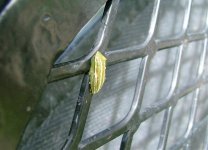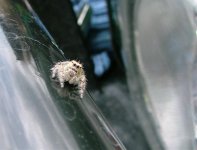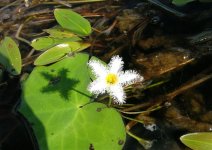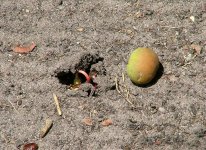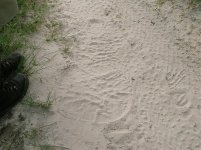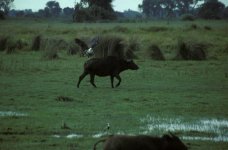December in Botswana - Delta and Selinda/Linyanti....Postscript
I realise that this is a bird forum, but I always feel that a bush visit should be a total experience, of which the birds are but one aspect, albeit a vital one, of the whole.
So just to round the whole thing off, here are five more photos illustrating the diversity of the region.
The first two photos show a couple of little hitch-hikers, found clinging to the bull-bars of the vehicle when we stopped. The first is Hyperolius nasutus, the long reed frog, part of the Delta's amphibian chorus. The second hitcher is a jumping spider, as indicated by its paired, forward-looking eyes. While not an arachnphobe, I am by no means an arachnophile, but I confess to a sneaking affection for jumping spiders. They will turn and look at you. There is an intimacy in this eye contact which is totally lacking in most insects and spiders, and somehow I feel I can relate to them. The only insect that does this is a praying mantis, and I feel the same connection with them.
Photo three shows the beautiful Water Gentian Nymphoides indica. This pretty little water plant, with its filamentous petals, is a highlight of any mokoro trip.
It seems that all too often visitors to the bush are obsessed with death - lion kills, leopard kills, vultures, hyenas and so on. Fascinating, certainly, but the true miracle is life, and here in Photo four is the start of life for a common Delta tree Croton megalobotrys, the large fever-berry.
Sometimes birding or game-viewing is difficult on any given day, so one of the things I try to do while in the bush is build up a photo-collection of spoor, droppings and signs which tell you who has been here before you. It's fun, fascinating, and adds hugely to any bush experience to know what creatures may be about. Photo five shows elephant tracks. The front foot of an elephant is considerably larger than the rear, since it must support the considerable weight of head, shoulders and tusks. In an elephant's normal, rather laid-back stride, the hind foot just overlaps the rear of the forefoot. In this track the hind foot just clips the front of the forefoot, indicating the the ellie was, if not exactly sprinting, at least hurrying along.
And for anybody interested, the circumference of the forefoot, multiplied by 2.5, will give you a fair estimate of the height of the animal at the shoulder.
Happy elephant tracking!
Best wishes,
Dave Kennedy




